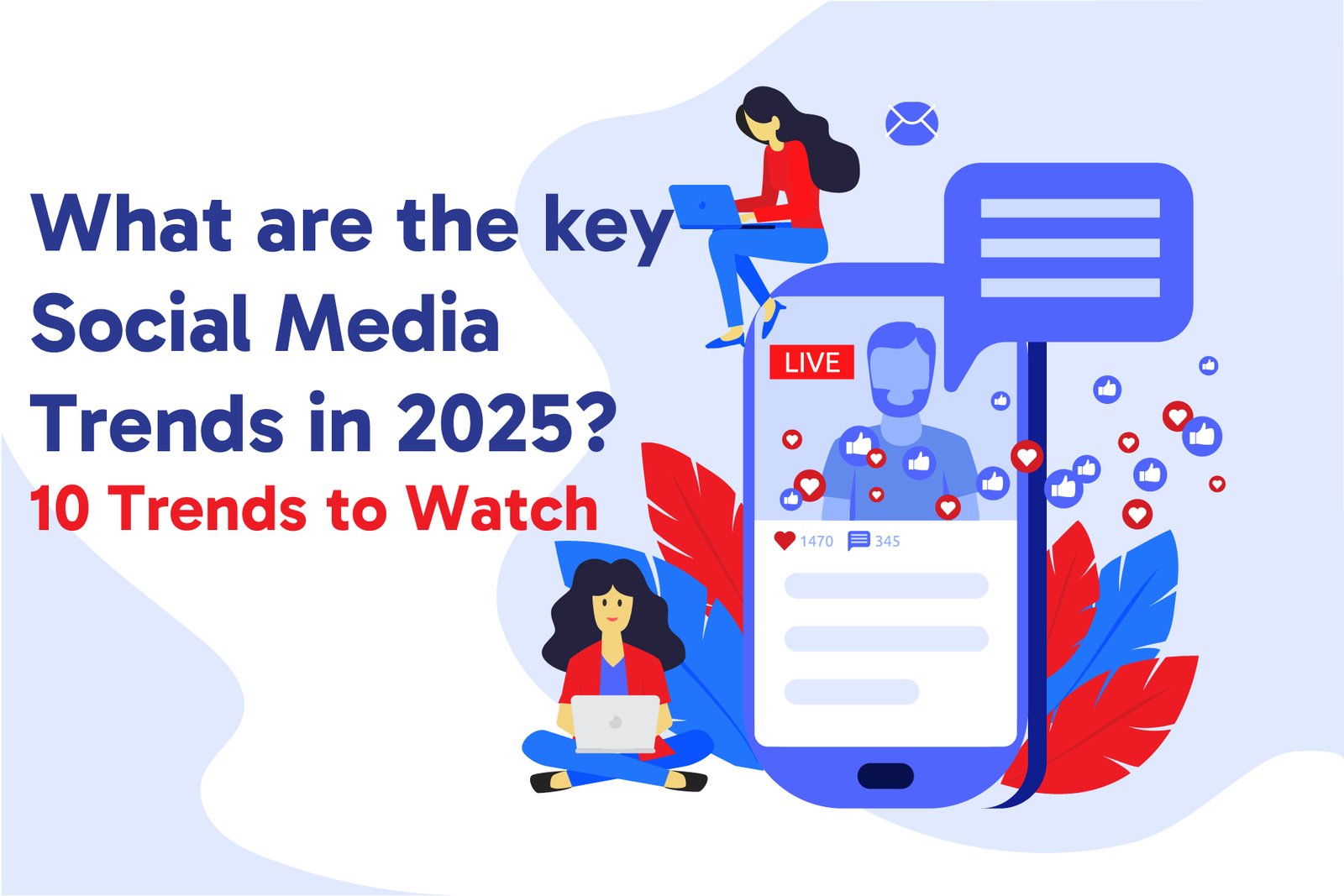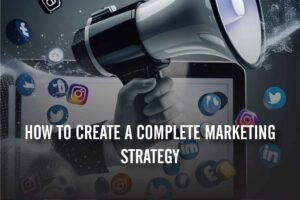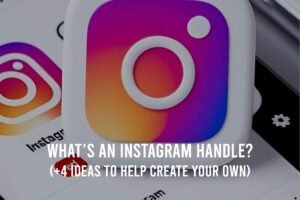Social Media Trends reinvents, not evolves anymore. One week, Instagram tests AI-generated chatbots, and the next week, TikTok is battling YouTube for long-form video. It is now clear to marketers that 2025 is not about keeping up; rather, it is about staying ahead.
There’s one problem, which is that businesses are still posting as if it’s 2022: Glitzy graphics, cliché copy, and the post-and-hope method. This just isn’t going to cut it anymore because the audience is too smart now, platforms are too intelligent, and leadership wants to see evidence that social is driving the business ahead.
So let’s take a look at 10 social media trends that shape 2025-and more importantly, how you can leverage them to future-proof your marketing strategy.
1. Video Rules Social Media Trends
For years, we’ve said “video is king.” In 2025, video is the king, queen, and parliament. From TikTok’s addictive short clips to YouTube’s long-form dominance, video now drives the lion’s share of engagement across platforms.
But here’s the twist: long-form video is making a comeback. TikTok and Instagram are both testing extended formats because users want more depth. At the same time, YouTube Shorts proves short-form still rules attention spans.
Why it matters: The best marketers aren’t choosing one format; they’re creating content pyramids. One long podcast episode, webinar, or interview can be chopped into dozens of short clips, memes, and even quote graphics.
Action step: Start producing one “pillar video” each month. Repurpose it into 10+ short-form clips and distribute across TikTok, Reels, Shorts, and LinkedIn. This approach multiplies reach without multiplying workload.
2. Cultural Fluency > Polished Branding
Audiences don’t just consume content; they consume culture. And in 2025, being culturally fluent is more important than having picture-perfect visuals.
According to Hootsuite’s 2024 report, 90% of people use marketing on social media trends as their primary source of cultural awareness, far ahead of TV or radio. That means brands that get memes, trending sounds, and micro-communities instantly feel more relevant.
Think of Duolingo on TikTok, the brand doesn’t just sell language learning; it participates in culture.
Why it matters: People scroll past perfect ads but engage with brands that feel like they’re “in on the joke.”
Action step: Assign someone on your team to be your “culture scout.” Their job? Spot rising social media trends, meme formats, and cultural shifts before they peak.
3. Content Experimentation Is the New Standard
In 2025, brands that play it too safe are invisible. Social feeds are crowded, and what cuts through isn’t necessarily “on brand,” it’s unexpected.
Hootsuite’s research shows that up to 60% of social posts in 2025 will focus on entertainment or education first, with promotion second. In other words: sell by not selling.
Example: Brands like Ryanair and Duolingo went viral by pushing boundaries of tone and humour while still reinforcing their value.
Action step: Dedicate 10–15% of your content calendar to experiments. Try formats that break your style guide: meme templates, casual captions, even “low-fi” phone-shot videos. Track what works, you’ll often find gold outside your comfort zone.
4. Outbound Engagement = The New Brand Awareness
Here’s the mistake most brands still make: posting, then waiting. In 2025, the winning strategy isn’t passive; it’s outbound engagement.
This entails actively participating in the conversation: commenting under viral creator posts, answering questions in relevant threads, or even initiating a debate on the matter. Research states 41% of companies are now investing in proactive engagement because it establishes visibility and trust more quickly than ads alone.
Why it matters: Every comment is freely distributed. Outbound engagement exposes you to audiences you didn’t have to pay for.
Action step: Block 20 minutes per day for your social team to engage outside your own posts. Comment strategically on creators, partners, or trending hashtags. Treat it like a mini-PR in real time.
5. Social Listening Becomes the Growth Radar
Social media trends listening is the answer to What do customers want in six months? No longer; just guess. By the year 2025, 62% of brands will use social media trends listening tools to make note of conversations, sentiment, and product feedback. However, the larger conversation no longer only finds small talk about brand mentions; it’s about spotting cultural and customer shifts before they actually go mainstream.
For instance, Chipotle has taken in TikTok marketing social media trends to sneak-preview limited-time menu hacks for which fans were already buzzing.
Action step: Find keywords relevant to your industry, not only considering keywords attached to your brand. For instance, if you are into skincare, look out for keywords like “skin barrier” or “retinol.” You get the edge to respond before competitors catch on.
6. Micro-Virality Beats One-Hit Wonders
The old dream was “going viral.” The new reality? Micro-virality. Instead of chasing one big viral hit, smart marketers aim for consistent, smaller waves of traction that resonate deeply with niche audiences. These build community loyalty and lead to stronger long-term results.
Why it matters: One viral video might get you millions of views, but no conversions. A series of micro-viral posts builds sustained trust and converts.
Action step: Define your “micro-viral sweet spot.” What content consistently gets shares and saves in your niche? Double down on that style and forget the pressure to chase current social media trends 2025, irrelevant to your brand.
7. AI Joins the Marketing Team (But Doesn’t Replace You)
Generative AI is no longer hype; it’s a standard tool. Marketers are using AI for brainstorming, writing first drafts, generating visuals, and even analysing performance data.
But here’s the kicker: audiences know when content feels AI-generated. Over 50% of consumers say they trust human-created content more.
Why it matters: AI accelerates, but it can’t replicate human nuance, humour, or cultural awareness.
Action step: Use AI for efficiency (drafting captions, summarising research, creating image variations), but always add a “human edit.” Make sure your final content has personality and context.
8. The Rise of Human-First Storytelling
The emphasis on human storytelling has ironically risen with AI. The days are gone when people wanted to see classy updates from corporates. Instead, they want raw, authentic glimpses behind the curtain.
Things like bloopers, team shoutouts, founder updates, and employee takeovers. While not always “perfect,” such content builds trust and relatability.
Action step: Introduce your team! Share the messy middle, not just the final product. Human-first storytelling shows there are real people behind the brand, and that drives emotional connection.
9. ROI Proof = Career Survival
Social media managers reported on likes, shares, and impressions in the past. Now in 2025, that won’t cut it anymore. Executives are now demanding a link from social media trends to business results, straight up.
Sprout Social reports that 65% of execs want ROI proof from social, and 52% want clear cost savings.
Why it matters: If you can’t prove business impact, your budget will get cut.
Action step: Build dashboards that show revenue-driven metrics: conversions, lead quality, and retention. Use UTMs, coupon codes, and attribution models to make social’s impact undeniable.
10. GEO (Generative Engine Optimisation) Is the New SEO
SEO is fast-growing into GEO or Generative Engine Optimisation. As AI search assistants (ChatGPT, Gemini, Perplexity) go mainstream, brands are now faced with optimising not only for Google, but for AI’s summarisation and citation of content.
Why it matters: If your content isn’t structured clearly, AI tools might skip you even if your blog ranks on Google.
Action step: Write with AI in mind. Use structured headers (H2s, H3s), FAQs, and concise takeaways. Think of how your blog would look if it were summarised into 2–3 sentences. That’s what AI will pull.
Final Thoughts: The Human Plus AI Balance
The future view of social media trends isn’t AI versus humans; it’s one giant merger. 2025 will see a rise in marketers willing to experiment, engage proactively, and strike a balance between digital and human. If you treat social media trends as a broadcast channel, you’ll fade into the feed. If you treat it as a cultural conversation, you’ll lead it.
Also, if you’re looking to work with a digital marketing agency, make sure they track these 10 social media trends to keep your brand ahead in 2025. Agencies like Cognitive IT Solutions are already up-to-date with these trends and managing their customers’ social media with real results.
Frequently Asked Questions (FAQs)
What are the key trends in marketing 2025?
In 2025, the social media trends and marketing world centres around video, AI, and trust. Indeed, TikTok, Instagram Reels, and YouTube Shorts now command the attention of customers. But really, long-format videos are slowly seeping into the consumers’ psyche as well. All the brands use AI tools for time management purposes, but mostly people prefer real human content instead. Another dramatic change is a shift in the companies’ mindset; they want proof that they expect marketing to show clear results, not just likes or views.
Which is the best marketing idea in 2025?
In 2025, the wisest choice will be to mix artificial intelligence with human creativity. AI can conjure up ideas or draft posts, but fleshing them out comes only from real people. The successful brands will chug along using AI to be faster and have a human touch to make the content feel real.
What are the social media trends in 2025 ads?
Advertising in 2025 will be more natural than regular commercials. Here is what you will see:
- You can watch shoppable videos where you can buy directly from the post.
- Creator ads (brands teaming up with influencers).
- AI-powered targeting shows ads to people who are likely to care.
- Of course, Privacy-focused ads as rules around data get stricter.
In a nutshell, ads are personal, useful, and shoppable.
Which digital marketing is best in 2025?
There is no “best,” but the top contenders are:
- Video marketing (short for broad reach, long for deeper content).
- Social media trends (interactive with the audience rather than simply broadcasting).
- Content built for AI search engine optimization (GEO).
- Influencer partnerships for credibility.
- Email marketing with personalized content.
If any single focus must be singled out, video on social media trends will prove to be the greatest in 2025.










